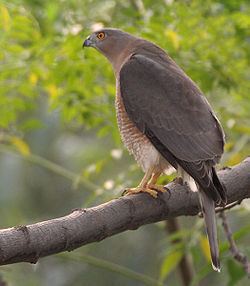Scientific name Accipitrinae | Subfamily Accipitrinae Phylum Chordata | |
 | ||
Mass Griffon vulture: 6.5 – 11 kg, Sharp-shinned hawk: 150 – 220 g, Grey goshawk: 680 g, Black sparrowhawk: 750 – 980 g Wingspan Griffon vulture: 2.3 – 2.8 m Length Griffon vulture: 93 – 120 cm Lower classifications Northern goshawk, Eurasian sparrowhawk, Accipiter, Short‑toed snake eagle, Gyps | ||
The Accipitrinae is the subfamily of the Accipitridae often known as the "true" hawks, including all members of Accipiter and the closely related genera Melierax, Urotriorchis, Erythrotriorchis and Megatriorchis. The large and widespread genus Accipiter includes goshawks, sparrowhawks, the sharp-shinned hawk and others. They are primarily woodland birds that hunt by sudden dashes from a concealed perch, with long tails, broad wings and high visual acuity facilitating this lifestyle. In light of recent genetic research, the kites of the traditional subfamily Milvinae may also belong to this group.
Contents
Hawks, including the accipitrines, are believed to have vision several times as sharp as that of the human species, in part because of the great number of photoreceptor cells in their retinas (up to 1,000,000 per square mm, against 200,000 for humans), a very high number of nerves connecting the receptors to the brain, and an indented fovea, which magnifies the central portion of the visual field.
Species in taxonomic order
Hawks and humans
Hawks are sometimes used in falconry, a sport in which trained birds of prey are flown at small game for sport.
